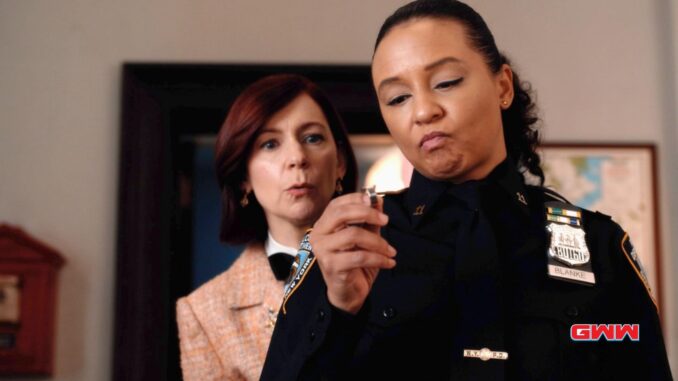
Why Elsbeth Is the Crime Show Fans Did Not Expect to Love
In a television landscape saturated with dimly lit interrogation rooms, morally compromised protagonists, and the relentless pursuit of grim realities, the arrival of Elsbeth felt, at first glance, like an anomaly. Crime show aficionados, seasoned in the gritty procedurals of Law & Order, the intricate puzzles of Sherlock, or the psychological depths of Mindhunter, likely approached Elsbeth with a raised eyebrow, expecting either a tired retread or a show too saccharine for the hardened genre. Yet, to the surprise of many, this whimsical spin-off of The Good Wife and The Good Fight has not merely found an audience; it has captivated hearts, becoming the unexpected comfort watch for those who thought they only craved darkness. The secret to Elsbeth's unlikely charm lies in its radical subversion of established genre tropes, its irrepressible titular character, and its refreshingly vibrant tone, offering a much-needed palate cleanser in a world awash with shadows.
The most striking departure Elsbeth makes from the traditional crime drama is its embrace of the "howcatchem" format over the ubiquitous "whodunit." From the opening moments of each episode, the audience is privy to the crime and the perpetrator’s identity. There is no suspense built around a hidden killer, no slow reveal of motive or means. Instead, the narrative tension shifts entirely to the ingenious process by which Elsbeth Tascioni, a disarmingly quirky New York attorney on temporary assignment with the NYPD, will unravel the seemingly perfect crime. This format is a brilliant psychological trick. It alleviates the pressure of deduction for the viewer, allowing them to relax into the brilliant machinations of Elsbeth’s mind. We are no longer detectives trying to solve the puzzle, but rather privileged observers watching a meticulously crafted Rube Goldberg machine of justice unfold, delighted by each click and whirr that leads to the inevitable, satisfying conclusion. It's a ballet of deduction, not a wrestling match with uncertainty.
Central to the show's irresistible appeal is, of course, Elsbeth Tascioni herself, portrayed with a mesmerizing blend of naiveté and brilliance by Carrie Preston. In a genre populated by stoic, often brooding detectives burdened by personal demons, Elsbeth is a beacon of quirky charm. Her signature wide-eyed wonder, her seemingly tangential observations, and her penchant for unexpected fashion choices might initially seem like charming eccentricities. Yet, beneath the whimsical surface lies a mind sharper than any blade, capable of connecting disparate dots with an almost supernatural intuition. She isn't burdened by the cynicism of her peers; instead, she approaches each case with an almost childlike curiosity, seeing patterns and discrepancies that seasoned professionals overlook. It's the errant lint on a meticulously clean suit, the subtle flinch in a confident smile, the almost imperceptible tremor in a perfectly steady hand – these are the threads Elsbeth pulls, leading her inexorably to the truth. Her optimism isn't naive; it’s a chosen lens through which to view an often-bleak world, making her not just effective, but profoundly endearing.
Beyond its clever plotting and delightful protagonist, Elsbeth distinguishes itself through its unapologetically vibrant aesthetic and refreshingly optimistic tone. While many crime shows drench their scenes in muted colors, perpetual twilight, and a sense of encroaching dread, Elsbeth bathes New York City in a kaleidoscope of vibrant street art, bustling cafes, and sun-drenched avenues. Her outfits are a character in themselves – a riot of patterns, textures, and unexpected accessories that mirror her unique perspective. The humor is light, often situational, and serves to amplify the characters' quirks rather than to mask a dark underbelly. This deliberate lightness creates a comfortable, almost cozy viewing experience, a stark contrast to the often-taxing emotional labor demanded by more traditional crime dramas. It's the television equivalent of a warm blanket and a cup of tea on a rainy day, a comforting embrace rather than a challenging intellectual exercise, and this warmth is precisely what an unsuspecting audience found themselves craving.
Perhaps the true genius of Elsbeth's success lies in its timing and its understanding of viewer fatigue. While the love for dark, complex narratives remains strong, there's also a deep-seated human need for joy, for resolution, and for the simple pleasure of watching good triumph. Elsbeth doesn't shy away from serious crimes, but it consistently frames them within a hopeful, solvable context. It reminds us that entertainment doesn't always have to challenge our moral compass or plunge us into existential despair. Sometimes, what we truly need is a clever, kind-hearted genius, dressed in mismatched patterns, solving crimes with a smile and a twinkle in her eye.
In conclusion, Elsbeth defied expectations not by trying to be the next gritty procedural, but by daring to be its joyful antithesis. It peeled back the layers of convention, revealing a "howcatchem" format that prioritizes cleverness over suspense, introducing a detective who is as much an agent of whimsy as she is of justice, and painting its world in hues of optimism rather than shades of grey. For crime show fans accustomed to the dark, Elsbeth arrived as an unexpected burst of sunshine, proving that sometimes, the show you never knew you needed is the one that surprises you with its unexpected, utterly delightful light.
